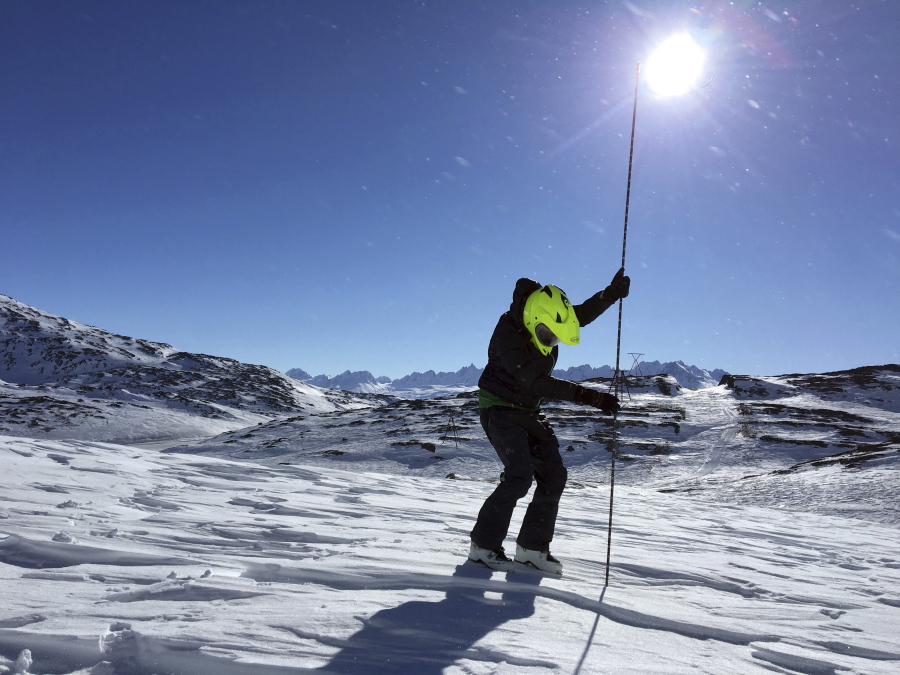ANCHORAGE, Alaska — America’s space agency wants you to head for the mountains with a smartphone and a measuring stick.
NASA’s earth science arm is funding research that recruits citizen scientists on skis, snowshoes and snowmobiles to measure snow depth in backcountry locations of the Pacific Northwest and Alaska.
Their measurements will be incorporated into computer models that calculate how much water will end up in the region’s rivers and reservoirs.
Early results have been promising.
“Our initial model runs show that citizen science measurements are doing an amazing job of improving our simulations,” said David Hill, an Oregon State University professor of civil engineering, who is collaborating with Alaska and University of Washington researchers. They received one of 16 NASA citizen science grants for the project.
The snowpack measurements are incorporated into computer models estimating “snow-water equivalent,” the amount of liquid water contained in snow cover, of a watershed.
In Western states, according to NASA, nearly three-fourths of annual stream flow that provides drinking water comes from spring and summer melt.
NASA in February began a multiyear research project to improve the accuracy of its snow measurements with partners in Europe and Canada, trying to solve challenges such as detecting snow through trees.
The grant awarded to Hill, Anthony Arendt of the University of Washington and Gabriel Wolken, a research geologist with the Alaska Division of Geological & Geophysical Surveys, is not directly connected to that project but has a mutual interest, said Kevin Murphy, a program executive for science data systems at NASA headquarters.
“We decided about two years ago to start this program, which really looks at how can we harness the creativity and the capabilities of citizens to augment a lot of our satellite or aircraft measurements,” Murphy said.
Snow telemetry stations maintained by the U.S. Agriculture Department are another important tool for measuring snow in high-elevation and other hard-to-access places, Hill said. The unmanned stations collect data using a system of automated sensors.
But too few of them exist, Hill said. “They’re expensive to install, they’re expensive to maintain, so there just aren’t that many.”
The citizen snow-measuring program, Community Snow Observations , aims to supplement that with people.
The measuring device can be as rudimentary as a yardstick, Hill said, but most people venturing into mountains already carry an avalanche probe, a 5- to 6-meter stick that folds down like a tent pole. After an avalanche, the probes are used to feel for buried people. Probes typically carry measurement markings.
For the citizen science program, an online tutorial tells participants to find undisturbed snow, push the probe firmly to the ground, read the depth in centimeters and enter the data onto a smartphone app. Participants are asked to repeat that several times and average the measurements.
The app records the location and time of the measurement and uploads the information. The program accounts for measurements in continental climate locations with light, dry snow or the wet, dense snow of maritime climates.
Initial measurements were made last winter in Alaska’s Thompson Pass north of Valdez, where other snow research was being conducted.
The hundreds of measurements collected far outpaced what the scientists could gather themselves. When NASA announced grants for citizen scientist projects, the researchers jumped to apply, Wolken said.




